The natural conditions where that species exists, whether favorable or difficult, force them to equip themselves with the most unique weapon to survive and develop. The gecko species in Vietnam is no exception. The gecko is considered the "Queen of long-legged lizards in Vietnam".
Through millions of years of struggle for survival and maintaining the species. Each different species, living in a different territory, will live thanks to the available food in the area and depend a lot on the climate where they are settling.
The natural conditions where that species exists, whether favorable or difficult, force them to equip themselves with a unique personal weapon to survive and develop.
The gecko species of the genus Goniurosaurus in Vietnam are no exception. Most of these species live in deep caves in the limestone mountains of Vietnam (except for the gecko species Goniurosaurus lichtenfelderi which lives in lowland mountains)...
Eyelid geckos of the genus Goniurosaurus in Vietnam are wild animals that are active and forage at night, so they have very large eyes with a very large opening to let in the most light, helping them see enemies to escape and prey to attack.
Vietnamese reptile researchers distinguish it from the common gecko group because its eyelid ridge is more prominent.
However, the common English name is Leopard geckos because its skin has leopard-like spots and bright colors. In addition to long legs, geckos are decorated by nature with a colorful "coat" that is beautiful in every detail.
With the original tail only slightly swollen at the base, but when the gecko's tail is cut off, the regenerated tail will swell larger than normal and very clearly.
The regenerated tails of lizards in general and echinoderms in particular are a very interesting development of this group of reptiles.
The regenerated tail not only develops muscles, blood vessels, bones but also a nervous system, and this is a surprising development that makes researchers need more time to study its regeneration in depth.
Because of the proud beauty that nature bestowed on these "Long-legged Queens" in Vietnam, they are being illegally hunted as pets and sold to China, so they need to be protected by quickly putting them in the Vietnam Red Book to manage and protect this rare species. This time, the website will introduce to readers the Thach sung mi species in Vietnam.
1. Goniurosaurus huulienensis
This lizard species was found in the limestone mountains (about 300-400 m altitude) in Lang Son . The right-eyed gecko has a body length of about 108-117 mm, a dark brown back, 1 cream or orange-yellow stripe behind the nape, 3 stripes between the forelimbs and hind limbs, 1 stripe right behind the hind limbs and 3-4 stripes on the tail, the tail tip is sometimes white or cream.
This is also the second species of gecko discovered in Vietnam in 2008 after the recently announced species Goniurosaurus catbaensis.
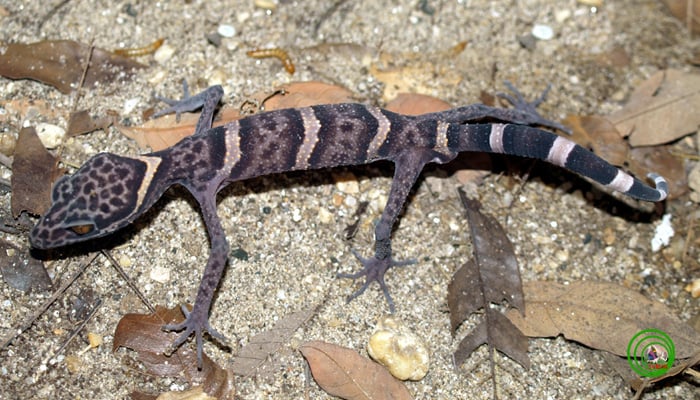
Goniurosaurus huulienensis – Photo: Phung My Trung
2. Cat Ba Eyelid Gecko - Goniurosaurus catbaensis
Cat Ba eyelid gecko has a slender, flat body, 84 - 111mm long; long and thin limbs; yellow-brown iris; brown back with gray streaks, many yellow spots on the flanks; a pale yellow arc-shaped stripe on the back of the neck, with 3 - 4 pale yellow strips running across the back.
Cat Ba Eyelid Gecko has granular body scales; has 16-21 holes before the anus. Lives in rock crevices and caves on cliffs in the Cat Ba Biosphere Reserve - Hai Phong .
The new species discovered in Vietnam was announced in May 2008. Currently, this lizard species has only been recorded on Cat Ba Island and this is also the only endemic gecko species known in Vietnam.
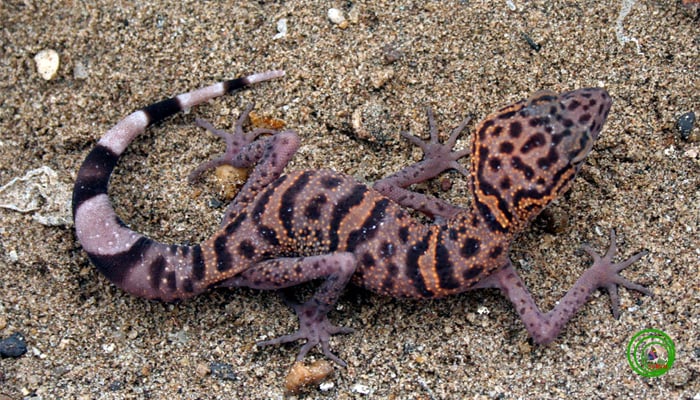
Goniurosaurus catbaensis – Photo: Pham The Cuong
3. Goniurosaurus luii
Luii geckos have a brilliant chocolate brown body with black and orange borders and a black and white tail that makes them more brilliant than ever. They live in crevices and caves on limestone cliffs in Trung Khanh, Cao Bang .
The newly recognized species distributed in Vietnam was announced in November 2005. Currently, this lizard species has only been recorded in Vietnam and this is also one of five species of geckos belonging to the genus Goniurosaurus currently known in Vietnam.
With Length from snout tip to anus: 119.0 with adult measurements of 107-116 mm); tail length is 67.0; head length (from snout tip to rear edge of ear) is 31.3; head width is 20.0; head height is 13.4; distance from snout tip to front edge of eye is 12.8; distance from rear edge of eye to gill is 11.7.

Close-up of a Goniurosaurus luii gecko – one of the wild reptile species known as the "Queen of long-legged lizards in Vietnam". Photo: Phung My Trung
4. Goniurosaurus lichtenfelderi lichtenfelderi
The lichtenfelderi gecko has a deep purple coloration over its entire body and five thick, yellow and white stripes, of equal width and extending only to the abdomen.
The eyes are a distinctive deep reddish brown with eyelid margins that closely match the eye color, making them quite striking. The tail color is the same as the body.
Usually changes yellow to white, the top of the head is quite dark brown. The body shape of this species is very similar to Goniurosaurus luii but the number of stripes around the body is fewer and clearer.
Length from snout tip to anus: 108 with adult measurements of 98-109 mm); tail length is 60.0; head length (from snout tip to the edge behind the ear) is 26.3; head width is 20.0; head height is 11.4. This species does not live in caves in the limestone mountains of northern Vietnam but lives in lowland mountains.
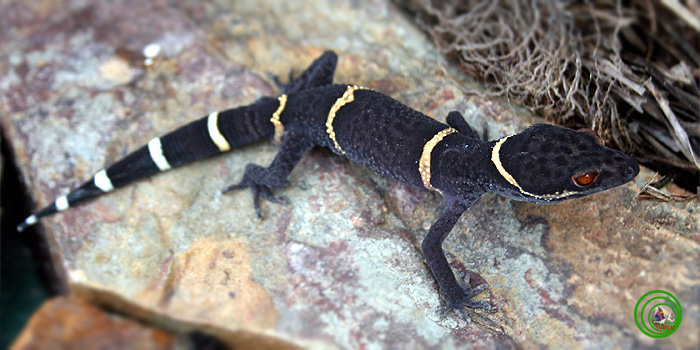
Goniurosaurus lichtenfelderi – Photo: Phung My Trung
5. Goniurosaurus araneus
With a nearly uniform yellow-black color on its body, the Vietnamese gecko is endemic to Cao Bang province of Vietnam.
The scientific name of this species comes from the Latin word “ aranea ” meaning “spider”, due to its spindly, long-legged, spider-like appearance. With four broad brown stripes on its back. Its eyes were reddish-brown. Goniurosaurus araneus is distinguished from other species of the genus by its elongated dorsal scales.
Length from snout tip to anus: 190 mm; tail length is 64.0; head length (from snout tip to the edge behind the ear) is 30.3; head width is 22.0.
Their habitat is mainly caves and is found in quite dry areas and mainly has some shrubs clinging to vertical cliffs, in limestone hilly terrain, or near limestone caves in Cao Bang, Vietnam.
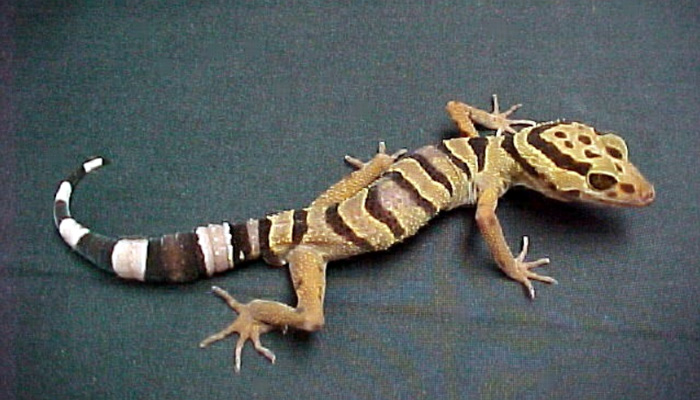
Close-up of a Vietnamese gecko Goniurosaurus araneus, one of the wild reptile species known as the "Queen of Vietnamese long-legged lizards" - Photo: Lee Grismeri.
Source: https://danviet.vn/5-con-dong-vat-hoang-da-co-ten-trong-sach-do-vi-nhu-nu-hoang-than-lan-chan-dai-viet-nam-20241101130820286.htm




![[Photo] Cat Ba - Green island paradise](/_next/image?url=https%3A%2F%2Fvphoto.vietnam.vn%2Fthumb%2F1200x675%2Fvietnam%2Fresource%2FIMAGE%2F2025%2F12%2F04%2F1764821844074_ndo_br_1-dcbthienduongxanh638-jpg.webp&w=3840&q=75)



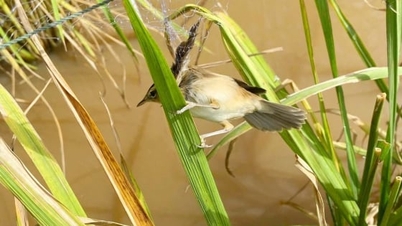







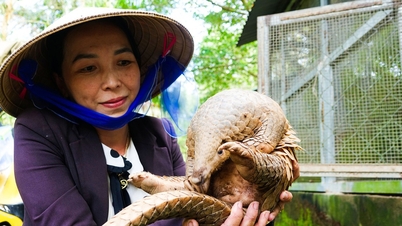

![Varieties Revolution: [Part 2] Tissue-cultured bananas overcome challenges](https://vphoto.vietnam.vn/thumb/402x226/vietnam/resource/IMAGE/2025/12/04/1764821852127_3654-102650723_2939528996132898_3129898509587505636_n-1-nongnghiep-113643.jpeg)









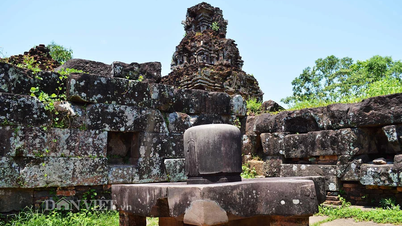



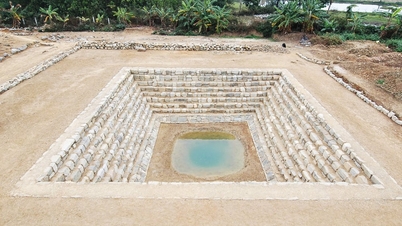





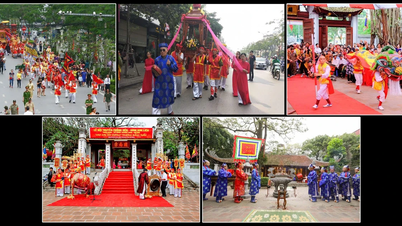



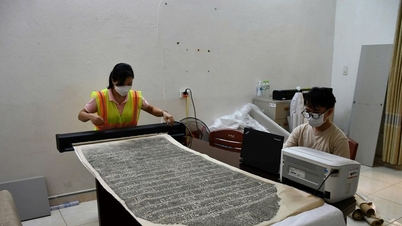

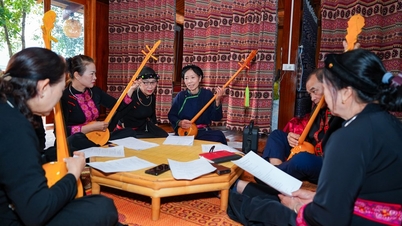

















![[VIMC 40 days of lightning speed] Da Nang Port: Unity - Lightning speed - Breakthrough to the finish line](https://vphoto.vietnam.vn/thumb/402x226/vietnam/resource/IMAGE/2025/12/04/1764833540882_cdn_4-12-25.jpeg)
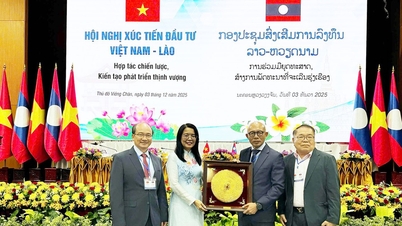















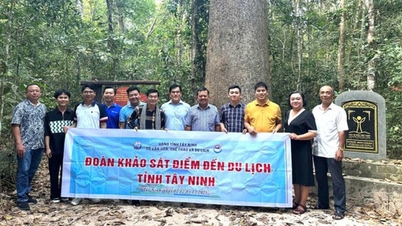































Comment (0)